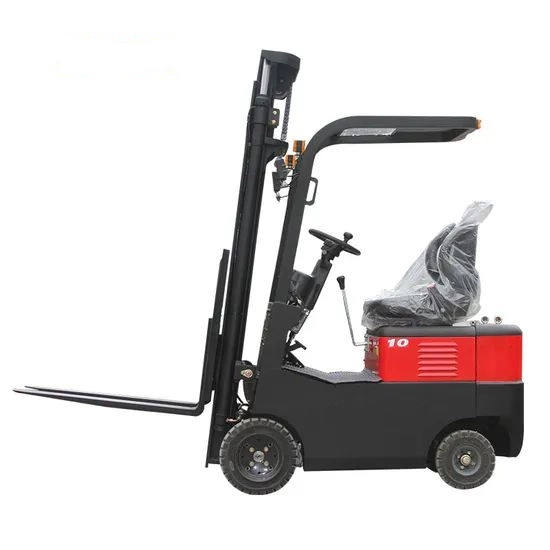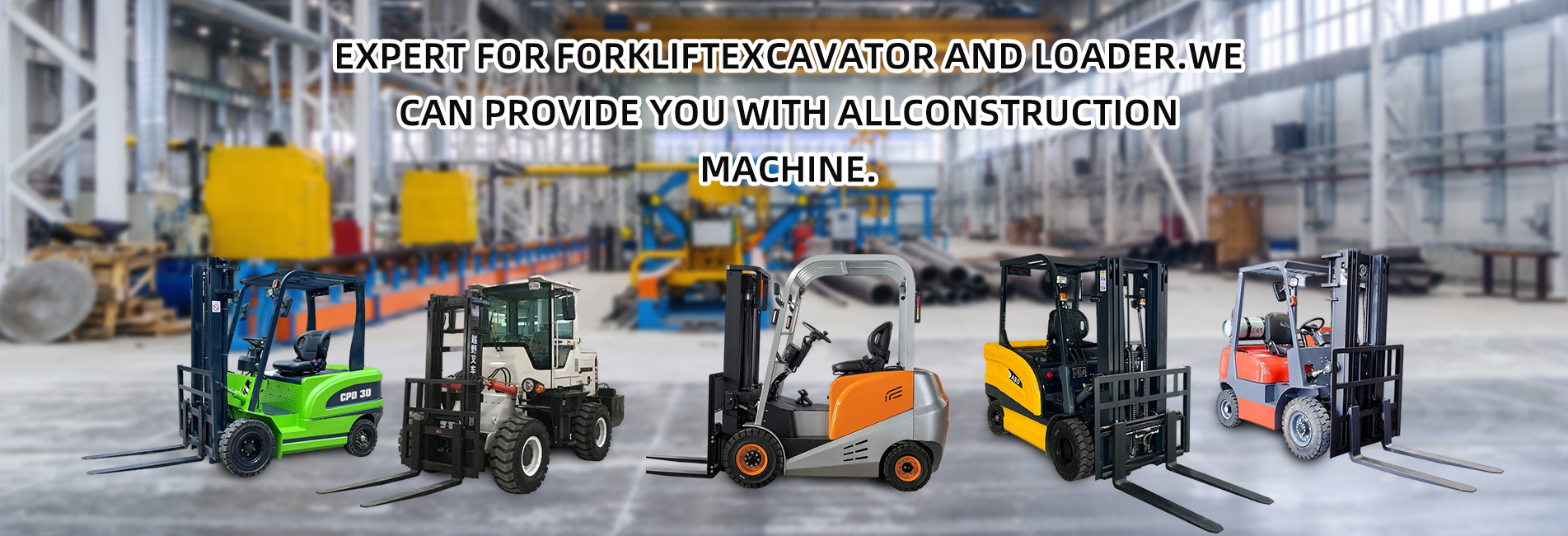Electric forklifts are industrial handling vehicles powered by storage batteries. With advantages such as environmental friendliness, high efficiency, and easy operation, they are widely used in indoor and outdoor scenarios such as warehouses, logistics centers, and workshops. The following is a detailed introduction from aspects including core characteristics, classifications, advantages, applicable scenarios, and maintenance key points:

I. Core Characteristics of Electric Forklifts
- Power Source
They rely on rechargeable lead-acid batteries or lithium batteries (lithium batteries have gradually become popular in recent years due to their high energy density and fast charging characteristics). They do not require fuel, achieve zero emissions (no exhaust pollution) during operation, and produce extremely low noise (usually below 70 decibels). - Driving Mode
They are driven by electric motors for traveling and the operation of the hydraulic system, with high control precision (such as stepless speed change and smooth start-stop), and the operation difficulty is lower than that of internal combustion forklifts. - Structural Composition
They mainly include battery packs, drive motors, hydraulic motors, controllers, forks, and body frames. The core components have a high degree of technical maturity (for example, AC motors have replaced DC motors, improving reliability).
II. Common Classifications (by Purpose and Structure)
- Counterbalanced Electric Forklifts: The most common type, with counterweights at the tail. They are suitable for various ground surfaces, have a load capacity range of 1-5 tons, and can be used for short-distance outdoor operations.
- Reach Electric Forklifts: The mast can be moved forward, and the body is compact. They are suitable for narrow passages (such as between warehouse shelves), have a load capacity of 1-3 tons, and are mostly used indoors.
- Electric Stackers: Specialized in stacking goods, with a high mast lifting height (up to more than 12 meters). They are suitable for high-rise shelf warehouses and are divided into walking and standing types.
- Electric Pallet Trucks: Used for flat handling of palletized goods, with a simple structure and a load capacity of 2-3 tons. They are commonly used for short-distance transportation in workshops.
III. Advantages Compared with Internal Combustion Forklifts (such as LPG and Diesel Forklifts)
| Comparison Dimension | Electric Forklifts | Internal Combustion Forklifts |
|---|---|---|
| Environmental Friendliness | Zero exhaust, low noise, suitable for clean environments such as food and pharmaceutical industries | Have exhaust emissions (including carbon monoxide and particulates), high noise |
| Operating Cost | Low electricity cost (about 1/3-1/2 of fuel cost), simple maintenance (no need to change oil, filters, etc.) | High fuel cost, many regular maintenance items (oil change, carbon cleaning, etc.) |
| Operation Experience | Smooth start, linear acceleration, low operation intensity | High vibration, high noise, easy fatigue during long-term operation |
| Applicable Environment | Indoor enclosed environments and scenarios with high environmental requirements (such as supermarkets, pharmaceutical warehouses) | Outdoor open-air, high-intensity operation scenarios (such as ports, construction sites) |
IV. Applicable Scenarios
- Indoor Warehouses: Such as e-commerce logistics warehouses, food cold storage (some models support low-temperature operations), and electronic workshops, with no exhaust pollution and no impact on indoor air quality.
- Narrow Spaces: Models such as reach trucks and pallet trucks are small in size, suitable for warehouses with small shelf spacing (passage width can be as low as 2-3 meters).
- Noise-Sensitive Places: Such as hospital logistics and logistics points near residential areas, to avoid noise disturbing residents.
- Medium and Low-Intensity Operations: Scenarios with daily operation time within 8 hours and load capacity below 3 tons, where battery life can meet the demand.
V. Key Points for Use and Maintenance
- Battery Maintenance
- Lead-acid batteries need regular replenishment of distilled water (except for maintenance-free batteries), avoid over-discharge (charge in time when the power is below 20%), and the charging environment needs to be ventilated.
- Lithium batteries need to use special chargers, avoid over-charging and over-discharging, need to maintain 50% power during long-term storage, and the battery life will decrease slightly in low-temperature environments.
- Daily Inspection
- Daily inspection of tire wear, brake performance, hydraulic oil level, and whether the motor connecting wires are loose.
- Regularly clean battery electrodes (to prevent oxidation) and check the tightness of the hydraulic system (to avoid oil leakage).
- Battery Life Management
- Lead-acid batteries have a single charge life of about 4-6 hours (for high-intensity operations), and lithium batteries can reach 6-8 hours. It is necessary to plan charging time according to the workload (lead-acid batteries take about 8-10 hours to fully charge, and lithium batteries take about 3-5 hours).
- Factors Affecting Service Life
- Battery life: Lead-acid batteries have about 500-800 charge-discharge cycles (2-3 years), lithium batteries have about 1500-2000 cycles (3-5 years), and proper maintenance can extend the life by 1-2 years.
- Vehicle life: The designed service life of core components (motors, controllers) is about 10-15 years, which is lower than that of internal combustion forklifts, but the maintenance cost is lower.
VI. Purchasing Suggestions
- If the operation is mainly indoors and emphasis is placed on environmental protection and low noise, electric forklifts are preferred; if outdoor high-intensity and long-endurance operations are required, internal combustion forklifts can be considered.
- For a load capacity of 1-3 tons and a lifting height within 3 meters, counterbalanced or reach electric forklifts have high cost performance; for high-rise shelves (above 6 meters), electric stackers are recommended.
- When the budget is sufficient, lithium battery models are more worry-free (less maintenance, fast charging), but the initial investment is 30%-50% higher than that of lead-acid batteries.
Electric forklifts are the mainstream trend of industrial handling in the future, and their application scenarios will continue to expand, especially against the background of stricter environmental protection policies.


